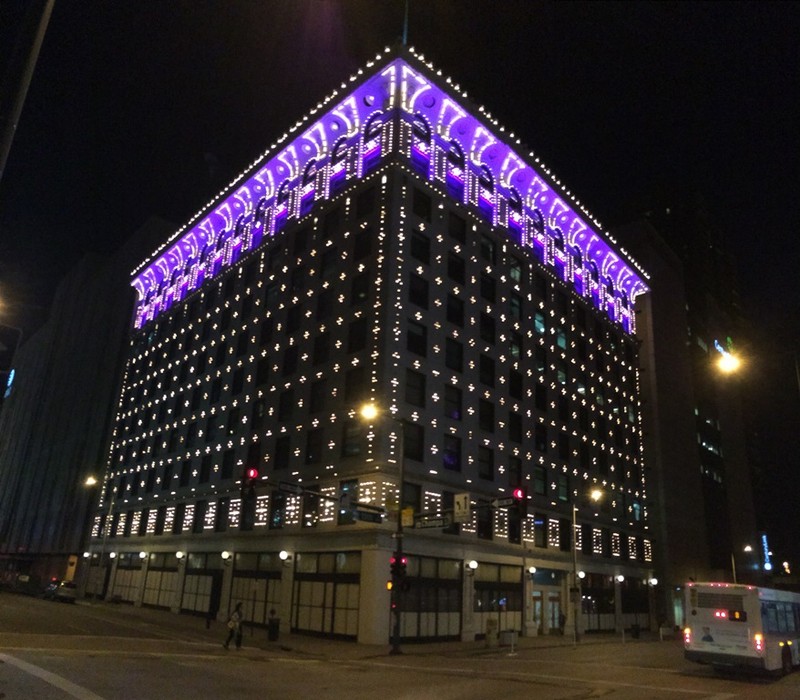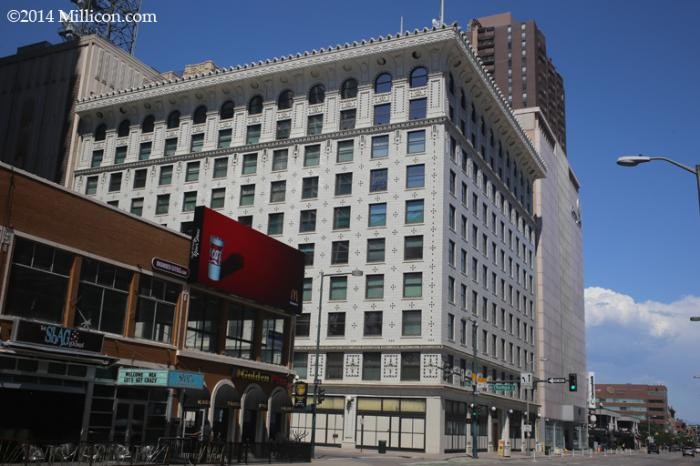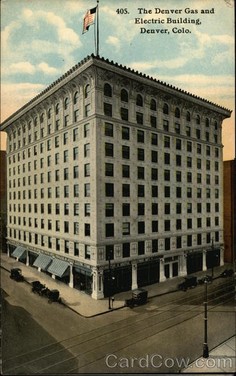Denver Gas & Electric Building (Public Service Company Building)
Introduction
Text-to-speech Audio
Images
The Denver Gas and Electric Building lit up at night.

The Denver Gas and Electric Building unlit during the day.

The Gas and Electric building in post card form.

Backstory and Context
Text-to-speech Audio
In the early years of the twentieth century, Denver promoted
itself as the “City of Lights”, thanks to its newly illuminated downtown
skyline, anchored by the “best lighted building in the world”, at 910 15th
Street. Built in 1910 to house the newly
consolidated Denver Gas & Electric Company, the Gas & Electric Building
provided visual evidence of the new prominence of electrical technology in
American life and of Denver’s status as a modern city.
As one of the rapidly growing “instant cities” of the American West, Denver provided an ideal market for utility companies seeking to promote electric- and gas-powered appliances as a necessary element of the modern home. An early photograph of the building shows a sign claiming "The Christmas gift will please if it's an electric iron, chafing dish, toaster, coffee percolator or artistic electric stand lamp - looking for a useful Christmas gift? - see our household electrical appliances" ( http://digital.denverlibrary.org/cdm/ref/collection/p15330coll22/id/1501). For more information on this era, see Cities of Light and Heat: Domesticating Gas & Electricity in Urban America by historian Mark H. Rose, which follows the growth of utilities in Denver and Kansas City.
Officially the work of local architectural firm Frank E. Edbrooke & Company, the building’s design has been attributed to Frank Edbrooke’s nephew, Harry J. Edbrooke, who would go on to create many notable structures in Denver after establishing his own firm in 1913. The building exemplifies the new American “skyscraper” style created by the Chicago architect Louis J. Sullivan in the late 1800s, when steel-frame construction and the invention of the elevator made truly tall buildings feasible. The Gas & Electric Building echoes Sullivan’s pioneering designs, especially in its three-part design and its use of ornament. The lower stories form a solid base below an eight-story shaft crowned by an overhanging cornice. The arched tenth-floor windows seem to flow upward into the curving cornice, providing a contrast to the simple squared-off forms of the middle stories.
What really makes the building stand out, however, are the
13,000 light bulb sockets embedded in the bright white terra cotta of the façade.
The lights trace the outlines of the building while creating geometric patterns
of their own. In the building’s early
days, it was referred to as “the best illuminated building in the world”, and
around 75,000 people – roughly a third of the city’s population at the time –
attended the initial switching-on of the lights. The ornamental lights remained
in use until World War II gave rise to mandatory Blackouts. The building was renamed the
Insurance Exchange Building and the lights fell into disuse after the Public Service Company of Colorado (Denver
Gas & Electric’s successor) moved to a different location in 1962. The building was
restored and the lights re-lit in 1990. It is listed on the National Register
of Historic Places.
Cite This Entry
Marian, Sara and Steve Tinker. "Denver Gas & Electric Building (Public Service Company Building)." Clio: Your Guide to History. July 3, 2016. Accessed March 29, 2025. https://theclio.com/entry/24111

